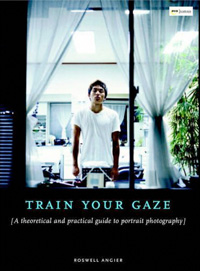University Mission
The mission of Abilene Christian University is to educate its student for Christian service and leadership throughout the world.
Course Description
A course designed for the exploration of current professional photographic techniques and trends. Emphasis on studio and field assignments related to problems encountered in commercial photography. Topics include, but are not limited to: studio product, portraiture, editorial, fashion, and architectural photography using digital cameras (DSLR, preferibally 10 megapixel or more), strobe and tungsten lighting, and business practices for professional photographers. Portfolio development and verbal presentations will be emphasized.
Textbook

Fundamentals of Creative Photography
Publisher: Ava Publishing (September 22, 2010)
ISBN-10: 2940411131
ISBN-13: 978-2940411139

Train Your Gaze
Publisher: AVA Publishing (November 15, 2006)
ISBN-10: 9782940373376
ISBN-13: 978-2940373376
Course Objectives:
• Expand students use of the materials, processes and techniques of professional photography
• Increase skills in the use of digital cameras
• Refine studio and location lighting skills
• Introduce students to digital imaging concepts in commercial photography studios
• Introduction to current business practices in commercial photography
• Elaboration of portfolio
Course Requirements:
A working proficiency with DSLRs, natural and studio lighting equipment, digital workflow (Adobe Lightroom), Photoshop is presumed.
Activities
• Lectures, demonstrations and class discussions
• Reading of selected articles, handouts, magazines and web sites
• Informal individual critiques of student work in progress
• Group critiques of assigned projects (final presentations)
• Lab work (The lab will be open for additional time outside of class for students to complete assignments)
Critiques
Critiques of assignments are important to the progress of each individual in the class, and to the success of the course itself. The critique fosters development of an ability to verbalize visual concepts, and will help you learn to see actively.
Critiques are a time for articulating your ideas and formal decisions, and for discovering how your creative products communicate through larger systems of symbolism, visual associations, memory, metaphor, and the history of knowledge and materials. Participation in critiques will be considered in grades for all assignments and class participation.
Class-blog
Online participation throughout class-blog discussions and comments.
Note: you are expected to write at least 10 comments, and encouraged to add 3 posts of your own thinking (not just a link to another website or blog, leave some comments, your opinion, what you think about the work linked, etc). Attention: any post/comment created after November 10th won’t count for your blog activity.
Departmental Policies
In Fall and Spring semesters:
3 unexcused absences from class are allowed in courses that meet twice a week (TR), and 4 are allowed in classes that meet three times a week (MWF).
After these absences have been used, grade penalties will be assigned as followed:
1. After 1 absence, students will have their course grade lowered by one letter grade, 2 absences, two letter grades.
2. Students who have more than 2 absences will be given a failing grade in the class (excused absence are death in the
immediate family, documented illness, official ACU-sponsored trips).
3. Arriving tardy 3 times equals one absence that counts against the permitted ones.
4. Students who participate in official University activities (athletics, debate, band, etc.) must provide the required University form one week in advance.
5. Leaving class early without permission from the instructor will be counted as a class absence.
Dress Code
Please follow the dress code outlined in your Student Handbook. You may be asked to leave class if you are not dressed according to the guidelines. Thanks for your cooperation.
Late work policy
Late work will be accepted, however student will be penalized 15 points on assignment (and student won’t be able to participate in project critiques).
Please do not wait until the end of the semester to try to work out specific problems. Come by and talk to me to make arrangements as problems arise.
Grading Factors
The final grade will be equally composed of 6 studio projects, and class participation (class activities, blog). In Advanced Photography classes a scale will be used as follows:
Projects – 6 x 100 = 600 points possible
Class participation* = 100 points possible
Blog interaction = 100 points possible
•Total possible points 800
*Class participation will be averaged by activities listed above.
GRADING SCALE:
A+ 100 A 95 A- 90
B+ 89 B 85 B- 80
C+ 79 C 75 C- 70
D+ 69 D 65 D- 60
F 59

Add a Comment
You must be logged in to post a comment.